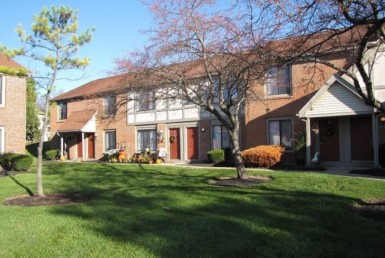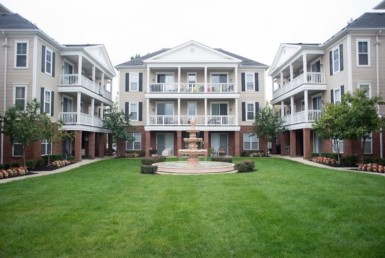This NON-DISCLOSURE AGREEMENT (this “Agreement”) is entered into by and between FT & Company LLC, Hilleary Creek LLC, Forest Creek LLC, Wildberry Village LLC and Schrock Group LLC and ___________________________________ (collectively known as “__________________”) as of the latest dated signature below.
1. Definitions.
a. “Confidential Information” means any and all information, in any form or medium, written or oral, concerning or relating to a party to this Agreement (whether prepared by such party, its Representatives (as defined below) or otherwise), including, without limitation, any analyses, strategies, target lists, business models, business plans, product offerings, product pricing, studies, presentations, compilations, summaries, extracts or other documentation. Confidential Information shall not include information that (i) was already known to the receiving party prior to disclosure of it to the receiving party by the disclosing party, (ii) is or becomes available to the public generally, other than as a result of disclosure by receiving party or one of its Representatives in breach of the terms of this Agreement, (iii) becomes available to receiving party from a source other than disclosing party or one of its Representatives who has the right to make such disclosure, (iv) has been independently acquired or developed by receiving party or (v) is specifically approved in writing by disclosing party for the receiving party to release.
b. “Representatives” means the directors, officers, managers, members, employees, affiliates, advisors, agents, contractors and other representatives of a party, including, without limitation, attorneys, accountants, consultants, financial advisors and sources of financing.
2. Confidentiality.
a. The receiving party acknowledges that all of the information provided by the disclosing party to the receiving party is confidential, proprietary and a trade secret of disclosing party.
b. The receiving party shall protect such Confidential Information in the same manner as it protects its own trade secrets and Confidential Information, but the use of such efforts shall not constitute a defense by the receiving party in the event that any of the Confidential Information is not kept confidential or is used other than in accordance with the terms of this Agreement.
c. The receiving party agrees that it will not, and will not permit any of its Representatives to, disclose any Confidential Information in any manner whatsoever; provided, however, that receiving party may disclose Confidential Information to such of its Representatives who have an actual need to know such information, provided that such Representatives shall be (i) informed by the receiving party of the confidential nature and the restrictions on disclosure of such Confidential Information, and (ii) agree to be bound by the confidentiality obligations set forth in this Agreement.
d. The receiving party shall use the Confidential Information only for such purposes as the disclosing party may agree to in advance.
e. The Confidential Information disclosed is and will remain the property of the disclosing party.
f. The receiving party shall notify the disclosing party immediately of any loss of Confidential Information.
g. The receiving party shall cooperate with the disclosing party in any reasonable audit or investigation by the disclosing party in the event that the disclosing party has reasonable grounds to believe a wrongful disclosure of Confidential Information has taken place.
h. If the receiving party or its Representatives are requested or required to disclose any Confidential Information by oral questions, interrogatories, requests for information or other documents in legal proceedings, subpoena, civil investigative demand, regulatory process or any other similar process, such party shall provide the disclosing party with prompt notice of any such request or requirement so that the disclosing party has an opportunity to seek a protective order or other appropriate remedy at its sole expense, or waive compliance with the provisions of this Agreement. If the disclosing party has not secured a protective order or other appropriate remedy, and receiving party or its Representative are nonetheless legally compelled to disclose any Confidential Information, receiving party or its Representatives, as applicable, may disclose that portion of the Confidential Information that it reasonably believes is necessary to be disclosed.
i. Upon the written request of the disclosing party, receiving party shall promptly return or destroy, and cause all its Representatives in receipt of such Confidential Information to return or destroy, all Confidential Information furnished to it or to any of receiving party’s Representatives, together with all copies of such Confidential Information in the possession or control of receiving party and its Representatives. Notwithstanding the return or destruction of the Confidential Information as aforesaid, receiving party and its Representatives shall continue to be bound by the terms of this Agreement with respect thereto, including all obligations of confidentiality.
3. No Liability, Reliance or Obligation. Each party hereto understands and acknowledges that the other party shall not be committed or liable in any way with respect to any transaction or to any matters discussed or negotiated unless and until a formal written agreement with respect thereto is executed by an authorized officer of each party, and that neither party shall have any liability to the other party in the event that, for any reason whatsoever, no such formal written agreement is executed, except for any breach of the terms of this Agreement. In addition, each party understands and acknowledges that, except as may be set forth in a formal written agreement entered into after the date hereof, neither the disclosing party nor any of its Representatives makes any representation or warranty, express or implied, as to the accuracy or completeness of any Confidential Information, and that neither the disclosing party nor any of its Representatives shall have any liability whatsoever to receiving party or to any of its Representatives relating to or resulting from the Confidential Information or any errors therein or omissions therefrom.
4. Remedies. Receiving party acknowledges that if it discloses any Confidential Information in breach of this Agreement that the disclosing party will suffer immediate and irreparable harm and that money damages would be an insufficient remedy. Receiving party further acknowledges that equitable relief, including injunction and specific performance, without the necessity of posting a bond, in the event of any actual or threatened breach of this Agreement, in addition to all other remedies available at law or equity, is thereby warranted.
5. Waivers. No failure or delay by the disclosing party in exercising any right, power or privilege hereunder shall operate as a waiver thereof, nor shall any single or partial exercise thereof preclude any other or further exercise thereof or the exercise of any other right, power or privilege hereunder. No provision hereof or right hereunder may be waived except in writing.
6. Notices. All notices required or permitted hereunder must be given in writing and shall be considered properly given if hand-delivered, mailed first class mail (postage pre-paid and return receipt requested) or sent by express overnight courier to the address specified on the signature page to this Agreement or to such other address as the recipient party may specify in writing pursuant to this Section. All notices shall be deemed given when received.
7. Governing Law; Consent to Jurisdiction; Waiver of Jury Trial. This Agreement shall be construed, performed and enforced in accordance with, and governed by, the laws of the State of Ohio (without giving effect to the principles of conflicts of laws thereof and the Federal Laws of the United States). In addition, each party hereto consents to the exclusive jurisdiction of any state or Federal court empowered to enforce this Agreement and located in Franklin County, Ohio, and waives any objection thereto on the basis of personal jurisdiction or venue. Each party waives their respective rights to trial by jury for any claim whatsoever in any way connected with the Agreement or the relationship of the parties.
8. Prevailing Party. In the event of any dispute arising from or related to the transactions contemplated under this Agreement, the substantially prevailing party shall be entitled to recovery of all reasonable costs incurred, including, without limitation, court costs, attorneys’ fees and other related costs and expenses.
9. Headings. The headings are for ease of reference only and shall not have any effect upon this Agreement.
10. Construction. The parties have participated jointly in the negotiation and drafting of this Agreement. In the event an ambiguity or question of intent or interpretation arises, this Agreement shall be construed as if drafted jointly by the parties and no presumption or burden of proof shall arise favoring or disfavoring any party by virtue of the authorship of any of the provisions of this Agreement. Any reference to any federal, state, local or foreign statute or law shall be deemed also to refer to all rules and regulations promulgated thereunder, unless the context requires otherwise.
11. Assignment. This Agreement may not be assigned by either party without the prior written consent of the other party.
12. Survival. The covenants and agreements made in this Agreement shall survive the termination of this Agreement.
13. Severability. If any term or provision of this Agreement shall be declared by a court of competent jurisdiction to be invalid, unenforceable or otherwise ineffective, that provision shall be limited or eliminated to the minimum extent necessary so that this Agreement shall otherwise remain in full force and effect and enforceable.
14. Entire Agreement; Modification. This Agreement embodies the entire agreement and understanding of the parties hereto and supersedes any and all prior agreements, arrangements and understandings, written or oral, relating to the matters provided for herein. No alteration, amendment, change or supplement hereto shall be binding or effective unless the same is set forth in writing signed by a duly authorized representative of each party.
15. Counterparts; Photographic Copies. For the convenience of the parties, any number of counterparts of this Agreement may be executed by the parties hereto. Each such counterpart shall be, and shall be deemed to be, an original instrument, but all such counterparts taken together shall constitute one and the same Agreement. A facsimile or photographic copy of this Agreement or any signatures hereon shall be deemed an original for all purposes.
16. Broker Indemnification: The parties do hereby acknowledge that the only real estate broker involved in this transaction is Matthew Brown of Brown Multifamily Advisors (“Seller’s Broker”). Seller’s Broker solely represents the Seller and does not owe any duty, fiduciary or otherwise, to any other party in transaction. Each party hereby agrees to indemnify, defend and hold harmless the other party from and against any liability, cost or expense, including attorneys’ fees, as a result of any claim for a commission, fee or other compensation made by any other real estate broker, finder or other Person and asserted against the other party by reason of an arrangement made or alleged to have been made by the indemnifying party.
IN WITNESS WHEREOF, the parties hereto have executed or caused this Agreement to be executed by their duly authorized officers as of the day and year first written above.
_________________________________________________:
__________________________________________________
(Signature)
__________________________________________________
(Name)
__________________________________________________
(Title)
__________________________________________________
(Date)
Address: _________________________________________
_________________________________________
Seller:
__________________________________________________
(Signature)
__________________________________________________
(Name)
__________________________________________________
(Title)
__________________________________________________
(Date)






Join The Discussion